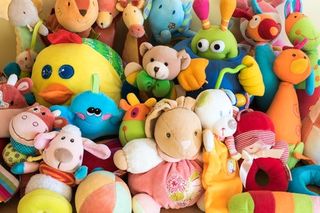Child Development
Which Toys Do Children Anthropomorphize?
New research helps us better understand childhood development.
Posted December 22, 2015
This Christmas, after a few hours of vigorous play, most toys will end up relegated to a toy chest, storage tub or mess pile in the corner of a room. A minority of these toys will become favorite toys that are played with often and used for imaginary play. However, during the course of a young child’s lifetime, typically only one toy (or blanket) will become an attachment object … an object that soothes this sleeping child when Mommy is not around … an object this child cherishes and possesses … an object that evokes distress in this child when it’s away for a wash.
In an important—yet somewhat understated—2015 study published in the journal Cognitive Development, British researchers found that young children are more likely to anthropomorphize attachment objects with humanlike features (faces) than they are to anthropomorphize similar favorite toys. For example, a child is more likely to attribute mental states, such as happiness, love or loneliness, to their one-and-only teddy bear to which they are emotionally attached than another favorite teddy bear that they merely like and play with. Furthermore, these researchers showed that children don’t significantly anthropomorphize objects without faces, such as blankets.

The results of this study fly in the face of how Jean Piaget, the famous Swiss developmental psychologist, viewed cognitive development in children. Specifically, Piaget posited that during the Preoperational Stage, or second stage of childhood development, young children indiscriminately attribute mental lives to the toys they own, a worldview termed animism. Instead, as suggested in the current study, young children engage in anthropomorphism, or the attribution of human qualities to a non-human object, entity, or animal.
In addition to helping us better understand childhood development, the results of this study may also form a cognitive basis for the anthropomorphism experienced by adults. Specifically, the feelings of social connectedness that a young child exhibits with respect to her attachment object may stem from emotional bonds developed when the child is left alone with the toy. Similarly, adults who are isolated and are thus lonely are more like to attribute human qualities to a non-human entity to which they are emotionally attached, like a dog.
On a final note, I remember that when my younger brother and I were little, he had an attachment object in the form of a GUND koala bear. This stuffed bear was given to him by a beloved babysitter, and my brother cherished it. One day my brother freaked out when my mom washed the bear and dried it; he could hardly stand being away from the koala for even a moment. After the stuffed toy came out of the dryer, its fur was all gnarled yet my brother still loved it and took it to nap. One day I got angry at my brother and threw his toy on the floor, breaking off its plastic nose in the process. My brother became enraged and told me that I “hurt” his bear, and his bear needed to see a “doctor.”


